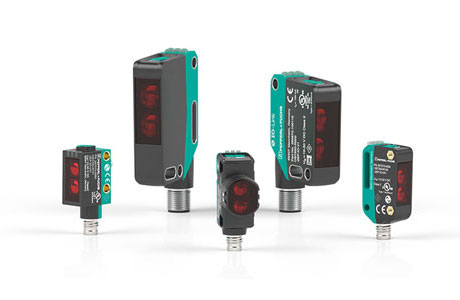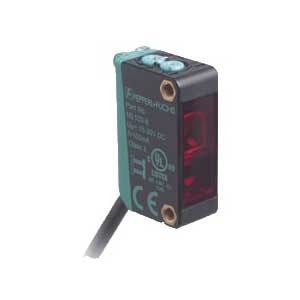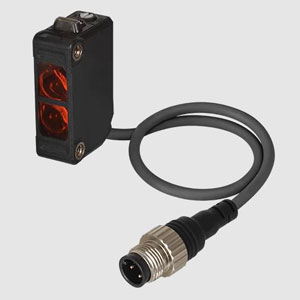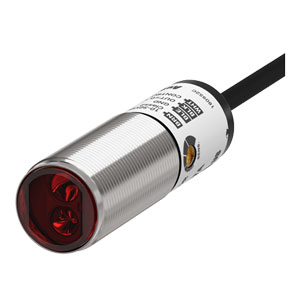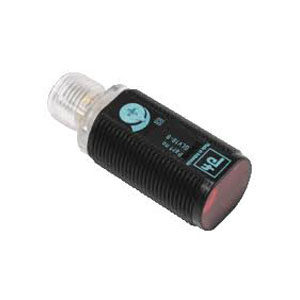
Ever wondered about terms like ‘Dark On Photo Sensors’ or ‘Polarization Filter’ when dealing with photoelectric sensors? Curious about what they mean? Then, this blog is just for you! We’ll walk you through these terms, breaking down each one so you can understand them easily.
Whether you’re already familiar with photoelectric sensors, or just starting to explore, this blog will surely make things easier. So, get ready to uncover the secrets of these technical terms.
Let’s dive in and learn together!
A
Ambient Temperature
Ambient temperature refers to the temperature of the surrounding environment in which a device, such as a photoelectric sensor, operates. It is an important factor to consider when selecting and using photoelectric sensors, as extreme temperatures can affect the sensor’s performance, accuracy, and overall lifespan.
When choosing a photoelectric sensor for your application, it is essential to ensure that the sensor can operate within the temperature range of your specific environment. Most photoelectric sensors are designed to work within a certain temperature range, which is typically specified by the manufacturer.
B
Background Suppression Photoelectric Sensors
Background suppression sensors are a type of photoelectric sensor specifically designed to detect target objects while ignoring the background. These sensors are useful in applications where the background is close to the target object or has a similar reflectivity, making it difficult for standard diffuse or retro-reflective sensors to differentiate between the target and the background.
Background suppression sensors work by using a combination of triangulation and distance measurement to determine the distance between the sensor and the target object. This enables the sensor to only detect objects within a predefined distance range, effectively suppressing the background and avoiding false detections.
Beam Spreading
Beam spreading refers to the gradual widening or divergence of the light beam emitted by a photoelectric sensor as it travels away from the sensor. This phenomenon is a natural characteristic of light, and it can have a significant impact on the performance and detection capabilities of photoelectric sensors.
In photoelectric sensors, a light source (such as an LED or laser diode) emits a beam of light that is directed toward the target object. When the light beam encounters the target, it is either reflected, absorbed, or transmitted, depending on the sensor type and target properties. The sensor then detects the change in light and generates an output signal accordingly.
C
Cable Length
If the Sensor is the Prewired Photo Sensor, then cable length is an important factor to consider when selecting and installing photoelectric sensors in an application. The cable length refers to the distance between the photoelectric sensor and the control or monitoring device, such as a programmable logic controller (PLC) or a human-machine interface (HMI). The appropriate cable length can have a significant impact on the sensor’s performance, reliability, and installation ease.
Cable Type Photo Sensor
Cable-type photo sensors are a category of photoelectric sensors that come with a pre-attached cable for easy connection to control and monitoring devices. These sensors are designed for easy installation and integration with various industrial automation systems, including programmable logic controllers (PLCs), human-machine interfaces (HMIs), and other control devices. There is PVC Cable, & PUR Cable.
Connector Type Photo Sensors
Connector-type photo sensors are a category of photoelectric sensors that feature a detachable connector for easy and secure connection to control and monitoring devices.
These sensors provide flexibility in installation and maintenance, as they allow for quick disconnection and reconnection without the need to remove the entire sensor or hardwired cables. There are M8, and M12 Connector types available with Photoelectric Sensors.
Control Elements
Control elements refer to the components within a photoelectric sensor that helps regulate and adjust its operation. These elements can include potentiometers, switches, dials, or buttons that allow users to fine-tune the sensor’s sensitivity, response time, or output mode. Control elements enable customization of sensor performance to suit specific application requirements and ensure optimal performance.
Cylindrical Photoelectric Sensor
Cylindrical photo sensors are a type of photoelectric sensor designed in cylindrical housing. This form factor allows for easy installation in tight spaces and offers versatile mounting options, such as in brackets or directly on surfaces.
Cylindrical photoelectric sensors are available in various diameters (M12 and M18) and can be equipped with various sensing technologies, such as through-beam, retroreflective, or diffuse sensors.
D
Dark On Photo Sensors
Dark On, also known as normally closed (NC), is a switching mode in photoelectric sensors where the output is active or “on” when the light beam is interrupted or blocked. In this mode, the sensor’s output is deactivated or “off” when the light beam is unobstructed. Dark On mode is commonly used in applications where an object’s presence needs to be detected, such as part counting or conveyor belt monitoring.
Degree of Protection
Degree of Protection, represented by the Ingress Protection (IP) rating, is a classification system that indicates the level of protection a photoelectric sensor offers against the ingress of solid particles, dust, and water. A higher IP rating denotes better protection against harsh environmental conditions.
For example, an IP67-rated sensor is dust-tight and can withstand temporary immersion in water, while an IP69K-rated sensor can withstand high-pressure water jets and steam cleaning.
Diameter of the Light Spot
The diameter of the light spot refers to the size of the illuminated area produced by the photoelectric sensor’s light emitter (usually an LED). This parameter is crucial for applications where small or fine objects need to be detected. A smaller light spot allows for more precise detection and better performance in applications where tiny objects or small gaps between objects must be identified. In contrast, a larger light spot may be more suitable for detecting larger or irregularly shaped objects.
Diffuse Sensors
Diffuse sensors, also known as proximity sensors, are a type of photoelectric sensor that uses the same unit for both emitting and receiving light. These sensors work by emitting a light beam, which is then reflected by the target object back to the sensor’s receiver. When the reflected light is detected, the sensor generates an output signal, indicating the presence of the object.
Diffuse Photoelectric sensors are widely used in industrial automation for various applications, such as object detection, presence/absence monitoring, and counting.
F
Function Indicator
A function indicator is a visual indicator, usually in the form of an LED light, on a photoelectric sensor that provides information about the sensor’s operating status.
Function indicators can signal various conditions such as power-on, signal strength, output status, or fault/error conditions. They help users quickly assess the sensor’s performance, verify proper operation, and diagnose any issues that may arise during operation.
H
Housing Materials
Housing materials in photoelectric sensors are vital for durability, environmental resistance, and application suitability. Common materials include:
Plastic: Lightweight, cost-effective, corrosion-resistant; suitable for non-harsh conditions without extreme temperatures, aggressive chemicals, or physical impact.
Metal (e.g., stainless steel, aluminum): Durable, impact-resistant; ideal for industrial environments with harsh conditions, vibration, or potential impacts.
Glass Fiber Reinforced Plastic (GFRP): Combines plastic’s lightweight nature with metal’s durability, providing excellent chemical, corrosion, and mechanical impact resistance, suitable for harsh environments.
Hysteresis
Hysteresis in photoelectric sensors creates a gap between switch-on and switch-off points, ensuring stable and accurate performance. It prevents rapid output signal switching when a target is near the sensing threshold, which may occur due to fluctuations in the object’s position or sensor sensitivity.
Hysteresis is essential in applications where environmental factors or mechanical vibrations can cause fluctuations, as it provides a buffer to maintain output signal stability and prevent false triggering or oscillation.
I
Infrared Light Emission
Infrared light emission refers to the use of infrared light as the source of illumination in photoelectric sensors. It offers advantages such as immunity to ambient light, longer sensing range, better performance with certain materials, and reduced interference.
Infrared photoelectric sensors are electronic devices that convert infrared radiation into electrical signals. They consist of a light source that emits IR light and a detector that detects the reflected or emitted IR light.
L
Light On Photoelectric Sensors
“Light On” is a term used to describe the operational mode of a photoelectric sensor when it switches its output on (active) when the sensor detects the presence of an object in its sensing range. This mode is also referred to as Normally Open (NO) or Light Operate (LO) mode.
Light Type
The light type of a photoelectric sensor refers to the wavelength of light used for detection. Common light types include:
Infrared (IR) light: Invisible to the human eye, offering advantages like immunity to ambient light, longer sensing range, better performance with certain materials, and reduced interference.
Visible Red light: Easier to align and set up due to its visibility, suitable for applications where precise alignment is necessary or where the sensor’s operation needs to be visually confirmed.
Laser Light: Offers a highly focused and narrow light beam, allowing for increased precision and detection of smaller objects at greater distances. Laser light can be either visible (red) or infrared.
N
NPN Output Photo Sensor
NPN output refers to the type of output signal configuration used in photoelectric sensors. NPN (Negative-Positive-Negative) output sensors are also known as “sinking” sensors. They provide a low (grounded) signal when an object is detected and a high (floating) signal when no object is detected. NPN output sensors are commonly used in industrial automation systems that have a common negative (ground) connection.
O
Opening Angle
The opening angle of a photoelectric sensor refers to the angle at which the emitted light spreads out from the sensor’s emitter. A larger opening angle results in a wider area of coverage, while a smaller opening angle offers more focused and precise detection.
The opening angle can be an important consideration when selecting a sensor for applications that require specific detection zones or when trying to avoid potential interference from other light sources or reflective surfaces.
Operating Voltage
Operating voltage is the range of voltage required for a photoelectric sensor to function properly. Photoelectric sensors typically have a specified operating voltage range, such as 10-30 VDC or 24-240 VAC, which must be met for the sensor to work correctly.
When selecting a photoelectric sensor, it is essential to ensure that the available power supply matches the sensor’s required operating voltage range to ensure proper functionality and avoid potential damage to the sensor.
Operation Indicator
An operation indicator is a visual signal, often in the form of an LED light, that indicates the current status of a photoelectric sensor. This indicator can help users quickly identify whether the sensor is functioning correctly, detecting an object, or experiencing an issue.
The operation indicator may display different colors or flash patterns to convey specific information about the sensor’s status, such as object detection, alignment, or power supply issues.
Optical Face
The optical face of a photoelectric sensor refers to the side of the sensor where the emitter and receiver components are located. This is the side that must be oriented toward the target object or reflector for the sensor to function properly.
It is essential to keep the optical face clean and free of obstructions, as dirt or debris can interfere with the sensor’s ability to detect objects accurately.
P
PNP Output Photoelectric Sensors
PNP output refers to the type of output signal configuration used in photoelectric sensors. PNP (Positive-Negative-Positive) output sensors are also known as “sourcing” sensors. They provide a high (positive) signal when an object is detected and a low (floating) signal when no object is detected.
PNP output sensors are commonly used in industrial automation systems that have a common positive connection. When selecting a photoelectric sensor, it is crucial to choose the appropriate output type (NPN or PNP) based on the requirements of the control system being used.
Polarization Filter
A polarization filter is a component used in some photoelectric sensors to help minimize false triggering caused by reflections or shiny surfaces. The filter selectively transmits light waves that have a specific orientation, effectively reducing the amount of reflected light that reaches the sensor’s receiver.
Polarization filters are especially useful in applications where the target object has a glossy or reflective surface, or when the sensor operates in an environment with bright ambient light.
Polarized Retro-Reflective Sensors
Polarized retro-reflective sensors are a type of photoelectric sensor that uses a polarized light beam to detect objects. These sensors have an emitter that sends out polarized light and a receiver that detects only the polarized light reflected from a special reflector.
The use of polarized light helps minimize false triggering caused by reflections from shiny surfaces or ambient light. Polarized retro-reflective sensors are ideal for detecting transparent or highly reflective objects, such as glass or metal, in various industrial applications.
R
Rectangular Photo Sensors
Rectangular photo sensors are a type of photoelectric sensor that has a rectangular housing shape. This form factor is often chosen for its compact size and ease of installation in tight spaces or when mounting on flat surfaces.
Rectangular photo sensors can be found in various types, such as through-beam, retro-reflective, and diffuse sensors, and are suitable for a wide range of applications in industrial automation, packaging, and material handling. The choice of a rectangular photo sensor depends on factors such as sensing range, target object properties, and environmental conditions.
Red Light Photo Sensors
Red light photoelectric sensors use visible red light as the light source for their sensing operation. Red light sensors are often chosen for their high visibility, making it easier for operators to align and troubleshoot the sensors.
Red light sensors perform well in applications where the target object has a high degree of light absorption, such as dark or non-reflective surfaces. However, red light sensors can be affected by ambient light, and their performance may be reduced in very bright or sunlight-filled environments.
Reference Target
A reference target is a standard object, typically a flat, matte white surface, used to calibrate and set up photoelectric sensors during the installation process. By directing the sensor’s light beam at the reference target and adjusting the sensor’s sensitivity or distance settings, operators can ensure optimal performance and accurate detection of the target object in the application.
Using a reference target helps eliminate potential issues caused by variations in the sensor’s light source or the target object’s surface properties.
Relay Output Photo Sensor
A relay output is a type of switching mechanism used in some photoelectric sensors to control the flow of electrical current in response to the sensor’s detection of a target object. Relay outputs consist of an electromechanical switch that opens or closes a circuit when the sensor’s light beam is interrupted or reflected.
These outputs can handle a wide range of voltages and currents, making them suitable for various industrial applications. Relay outputs are typically slower in response time compared to solid-state outputs, such as NPN or PNP transistor outputs, but they offer higher electrical isolation and the ability to switch both AC and DC loads.
Response Time
Response time refers to the time it takes for a photoelectric sensor to react to a change in the presence or absence of a target object. It is an important factor to consider when selecting a photoelectric sensor for a specific application, as it determines how quickly the sensor can detect and process changes in the target object’s position.
A faster response time is essential for high-speed applications or those with rapidly moving objects, while a slower response time may be sufficient for applications with slower-moving or stationary objects.
Retro Reflective Photoelectric Sensors
Retro-reflective sensors are a type of photoelectric sensor that operates by emitting a light beam toward a reflector, which then reflects the light back to the sensor’s receiver. When a target object interrupts the light beam, the sensor detects the change in the returned light and triggers an output signal. Retroreflective sensors offer longer sensing distances compared to diffuse sensors and are relatively insensitive to the target object’s color or surface properties.
However, they can be affected by the reflectivity of the target object, especially if it has a shiny or reflective surface. To overcome this issue, some retro-reflective photoelectric sensors are equipped with polarization filters that only allow light with a specific polarization direction to pass through, helping to minimize false detections caused by reflective objects.
S
Sensing Distance
Sensing distance refers to the maximum distance at which a photoelectric sensor can reliably detect a target object. This parameter is crucial in determining the suitability of a specific sensor for a given application.
Sensing distances vary depending on the type of photoelectric sensor (through-beam, retro-reflective, or diffuse), target properties, and environmental conditions. When selecting a sensor, it is essential to ensure that the sensing distance is sufficient for the intended application.
Sensitivity Adjustment
Sensitivity adjustment is a feature that allows users to modify the sensitivity of a photoelectric sensor to better suit specific applications or target objects. This feature is beneficial when detecting low-reflectivity or small objects at different distances.
Adjusting the sensitivity can help minimize false detections and improve the overall accuracy and reliability of the sensor.
Switching Frequency
Switching frequency refers to the maximum number of times a photoelectric sensor can change its output state (from ON to OFF or vice versa) within a given time period, typically measured in Hertz (Hz).
Several factors, such as object properties, environment, range, and accuracy requirements, guide the selection of the appropriate sensor and detection method.
When selecting a photoelectric sensor, it is crucial to ensure that its switching frequency is compatible with the requirements of the intended application to achieve optimal performance.
Switching Output
The switching output of a photoelectric sensor refers to the type of electrical signal it generates when it detects a target object. There are two main types of switching outputs: transistor-based (NPN or PNP) and relay-based.
Transistor outputs are faster but have lower current capacity, while relay outputs are slower but can handle higher currents. Choose a photoelectric sensor with a switching output type that is compatible with your system’s requirements.
T
Thru Beam Sensors
Thru-beam sensors, also known as through-beam sensors, are a type of photoelectric sensor that utilizes a separate emitter and receiver. The emitter sends a focused light beam, usually infrared, towards the receiver. When an object interrupts the light beam, the receiver detects the loss of light and changes the sensor’s output state.
Thru beam Photoelectric sensors offer long sensing distances and high levels of accuracy, making them ideal for applications where the target object is far away or where precision is critical. However, they require proper alignment between the transmitter and receiver, and their performance can be affected by dirt or debris accumulating on the optical components.
Conclusion
Photoelectric sensors are versatile and valuable components in various industries and applications. To ensure the best performance and compatibility with your specific application, it is crucial to understand the key terminologies related to photoelectric sensors, such as ambient temperature, housing materials, infrared light emission, switching output, and sensing distance.
By taking into account factors like sensing range, light type, output type, and environmental conditions, you can make informed decisions when selecting the right sensor for your needs. By considering all these aspects, you can optimize the efficiency, reliability, and safety of your systems that utilize photoelectric sensors.

